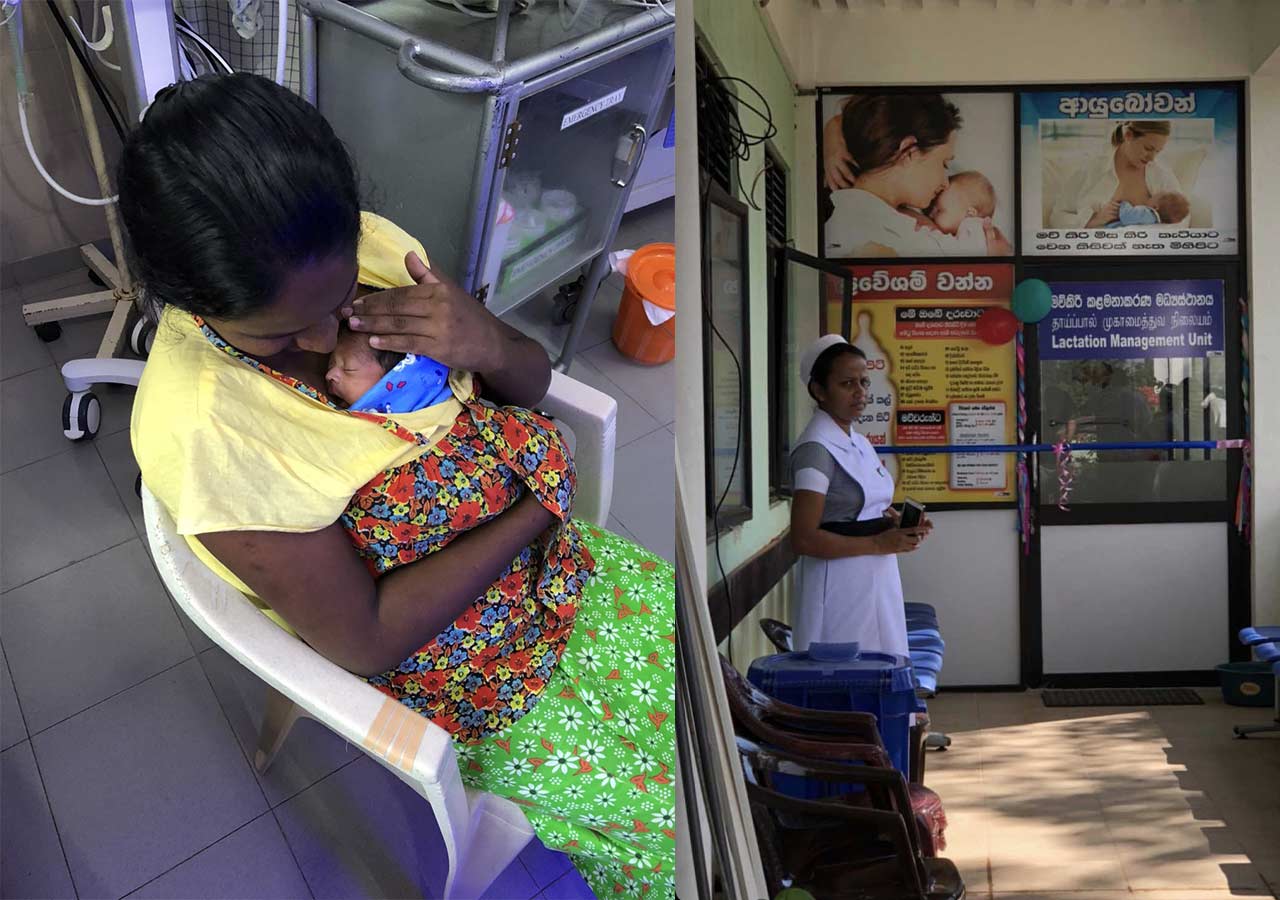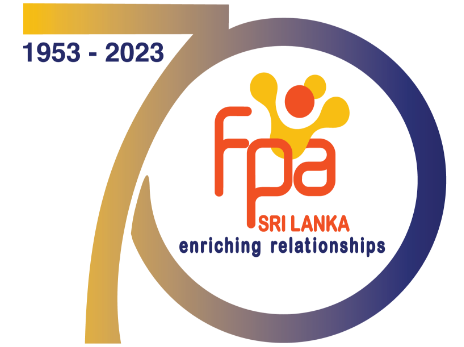Breastfeeding in a modern world: what needs to change?

Breastfeeding has always been considered a routine and important act post-partum. But, with the decreasing trend of breastfeeding in today’s modern world, where does Sri Lanka stand? And what does this mean for Sri Lankan mothers?
The current WHO recommendation on breastfeeding is to “exclusively breastfeed in the first six months of life, giving babies only breast milk and no other liquids or solids except for drops or syrups consisting of vitamins, mineral supplements or medicines if medically indicated”.[1] To improve breastfeeding initiation amongst mothers in Sri Lanka, the “Baby Friendly Hospital Initiative” was started in 1993, and to ensure mothers are supported on their breastfeeding journey even once they leave the hospital, lactational management centers were introduced in 2005 . According to the Demographic and Health Survey (DHS) of 2016, Sri Lanka boasts an impressive breastfeeding initiation rate, with 90% of newborn babies being breastfed within one hour of birth and 98% within one day of birth.[2] The DHS (2016) also found that 82% of children in Sri Lanka are exclusively breastfed for the 1st 6 months, but during the 6 months the percentage of children breastfed steadily decreases as the child’s age increases.[2]
The benefits of breastfeeding
Breastfeeding is an intimate practice, helping the mother bond with her newborn. It is also fresh, convenient and has no cost. Much is known about the benefits of breast milk for the newborn baby. Breast milk has the ideal nutritional composition for the growing newborn and protects the baby from infections such as diarrhoea and otitis media (ear infections). It also helps brain development and protects the baby from the development of chronic conditions in the future, such as obesity, asthma and diabetes. Another mystifying fact about breast milk is that the breast milk of mothers to preterm babies is specifically formed to help protect the still immature baby from sepsis and a serious gastrointestinal condition, necrotizing enterocolitis.
The benefits of breastfeeding do not just only serve the baby, but also extend to the mother. Breast feeding has been found to significantly reduce the mother’s risk of developing breast and ovarian cancer, hypercholesterolaemia, diabetes and heart disease. It also assists the mother in returning to her pre-pregnancy weight, and perpetuates a period of lactational amenorrhoea which is considered a natural, but unreliable form of contraception.
When should breastfeeding be avoided?
There are very few instances where breastfeeding is discouraged. One such instance is when the mother is HIV positive. HIV+ mothers are counselled to withhold breastfeeding in order to prevent transmission of the HIV virus from mother to baby via breast milk. In this instance, to support the mother, formula milk is provided free of charge for a period of one year through the National STD/AIDs Control Programme in Sri Lanka. In countries like India however, where access to clean drinking water and clean water to wash bottles is limited, breastfeeding is preferred over bottle feeding with formula milk regardless of HIV status. This is due to the risk of formula milk being made with unclean water and hence causing illness in infants.
Why are breastfeeding rates decreasing?
There are a multitude of reasons proposed to why breastfeeding rates decrease.
In a study done by Angampodi TC et al (2001), factors which were found to prevent mothers from early breast feeding included postoperative pain (especially if a c-section was done), a premature/sick neonate or congenital anomalies such as tongue ties. Breast engorgement, sore/cracked nipples and pain may also hinder breast feeding. Barriers faced when trying to continue breastfeeding after initiation included an unsupportive environment for breastfeeding, negative attitude of family members, early return to work due to lack of financial support at home and an unsupportive working environment.
Additionally, in today’s context, another reason found is the pressure to breastfeed; especially by healthcare workers. Mothers are sometimes ridiculed about having inadequate or low milk production. This leads into a cycle of emotional distress and further poor milk production by the mother. The frustration from the pressure to “perform” sometimes pushes mothers into resorting to bottle feeding with formula milk. Ms. Kerri May (UK Registered Nurse, Certified Lactation Professional and Birth Doula) stated that there is an expectation that breasts should be bursting with milk in the first few weeks, but this is not so. “I hear many mothers saying that they have insufficient milk supply, this is rare. It is about managing one’s expectation; your baby’s stomach is the size of a cherry on day 1 and only needs 7ml (just over a teaspoon) per feed.”
Conclusion
Educating healthcare workers to be more empathetic towards new mothers when breastfeeding and to reduce barriers to breastfeeding will help improve breastfeeding rates. This can be as simple as ensuring adequate pain analgesia for mothers post c-section and encouraging kangaroo care for mothers with babies receiving NICU care. (Kangaroo care is a form of skin-to-skin contact where the newborn baby (naked except for the diaper) is placed onto the mother's bare chest for a couple of hours. A cloth is wrapped around both mother and baby to support the baby on the mother's chest - this closely resembles a kangaroo pouch. It is often practiced in the NICU settings where the mother and baby have to be separated for medical reasons. In addition to improving the bond between mother & baby and the mother's breast milk supply, Kangaroo care has been found to comfort the baby, stabilise the baby's heart rate, and improve breathing). For mothers who need to return to work, educating new mothers on expressing breast milk and storing it may be beneficial to them. Ms. Kerri May also advises new mothers returning to work to plan early; start introducing your baby to a cup or bottle a couple of weeks before starting work. It can be helpful for someone else to feed the baby during these ‘practice’ feeds.
It will take considerable effort, but in order to ensure women continue breastfeeding, healthcare workers will have to revise their patient education and especially address the barriers so that more women are encouraged to continue breastfeeding.
Reference
- Demographic and Health Survey Report (2016) Chapter 11 - Nutrition of Children and Women. http://www.statistics.gov.lk/Health/StaticalInformation/DemographicAndHealthSurveyReport-2016-Chapter11 Accessed on 20th August 2021
- National Programme on Elimination of Mother to Child Transmission of HIV and Syphilis in Sri Lanka: A Guide for Maternal and Child Healthcare Staff. https://www.aidscontrol.gov.lk/images/pdfs/publications/guidelines/EMTCT-MCH-guide.pdf Accessed on 20th August 2021
- WHO Breastfeeding. https://www.who.int/health-topics/breastfeeding#tab=tab_1 Accessed on 20th August 2021
- Agampodi, T.C., Dharmasoma, N.K., Koralagedara, I.S. et al. Barriers for early initiation and exclusive breastfeeding up to six months in predominantly rural Lanka: a need to strengthen policy implementation. Int Breastfeed J 16, 32 (2021). https://doi.org/10.1186/s13006-021-00378-0
.png)



